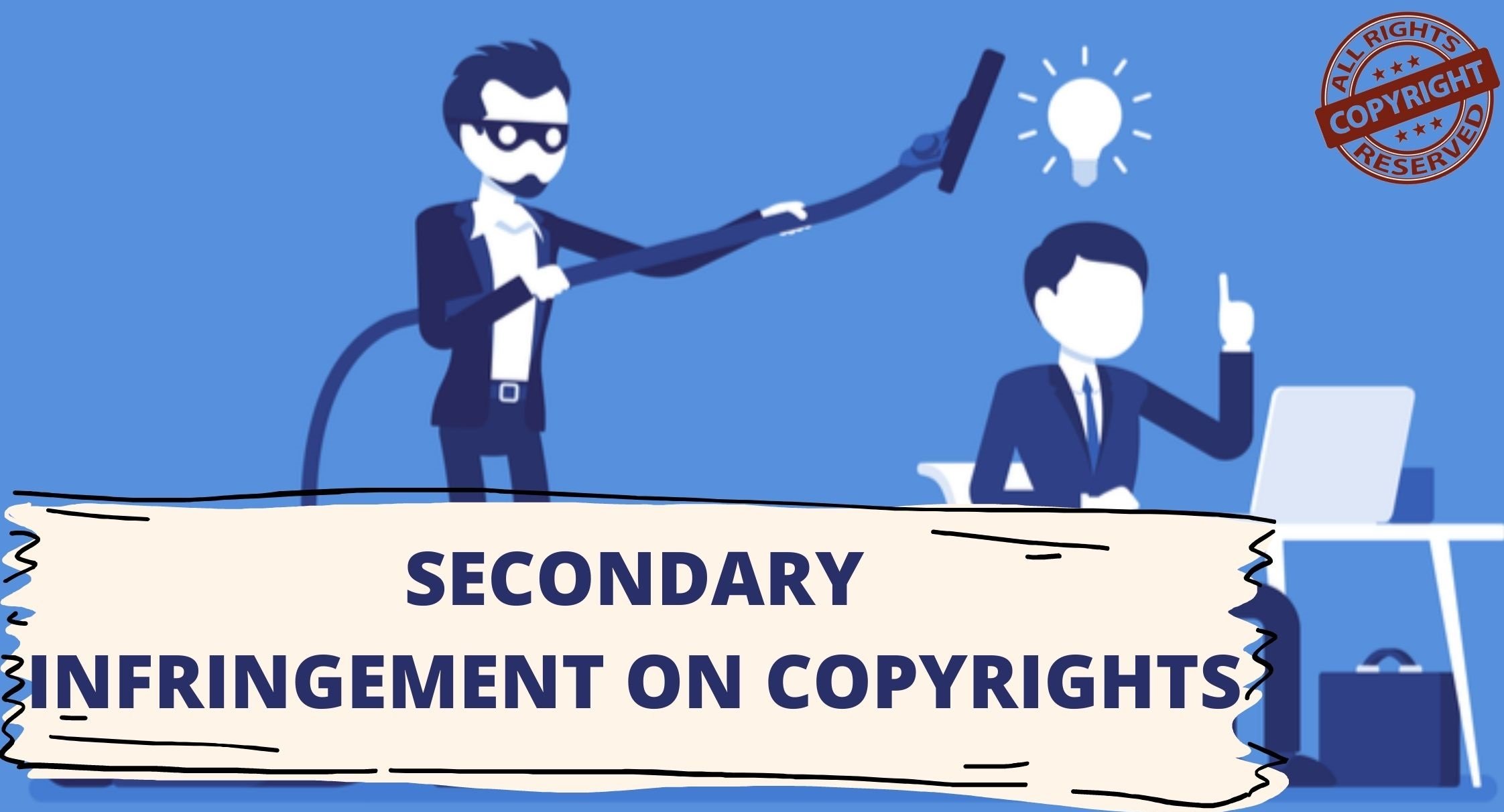SECONDARY INFRINGEMENT ON COPYRIGHTS
The infringement of copyrights can be of two forms- primary infringement and secondary infringement. Primary infringement occurs when the infringer copies the original work of the owner without his authorization or permission, whereas, secondary infringement occurs when the work is infringed without actually copying it.

Copyright is an intellectual property that provides the owner with certain exclusive rights over his creation. The creation can be artistic, literary or educational. The copyright is given to any owner only after the intellectual property has been registered. Once the registration process is complete, the owner gains all the rights over the creation and can make copies of the work as and when required till the application expires. The various rights given to the owner include the right to reproduce the work and to distribute copies. However, there are certain exceptions to the rights granted to the owners. Under certain circumstances, the work of the owner can be used by others without his permission or paying him for using it. Fair use is the best example of it.
TO KNOW MORE ABOUT COPYRIGHT LAW, CLICK ON THIS VIDEO -
Infringement of copyright refers to the unlawful and unauthorised use of one’s registered design, logo or symbol for personal purposes, thereby infringing certain rights conferred upon the lawful owner. Section 14 of the Copyright Act, 1957 defines copyright whereas Section 51 of the act talks about its infringement. Therefore, any artistic work, literary work or dramatic work that has been copyrighted and used unlawfully comes within the ambit of the Copyright Act, 1957. This encourages and promotes artistic work by creators as it provides exclusive rights to them as an incentive for their original content. The infringement of copyrights can be of two forms- primary infringement and secondary infringement. Primary infringement occurs when the infringer copies the original work of the owner without his authorization or permission, whereas, secondary infringement occurs when the work is infringed without actually copying it, for example, when a person sells, distributes or imports copies of the work that has been infringed he is said to commit secondary infringement of copyrights. It basically holds a person liable for infringement of copyrights even though he actually did not commit any infringement activity directly.
PROVING SECONDARY INFRINGEMENT:
Secondary infringement is also known as contributory infringement or secondary liability for copyright infringement. However, it is not that easy to prove secondary infringement as there is no direct involvement of any person in it.
In order to prove secondary infringement, certain provisions need to be fulfilled which are as follows:
(i) There should be valid copyright that is infringed
(ii) The defendant must be aware of the copyright
(iii) The defendant must be aware that his actions would lead to infringement
For example, if a defendant persuades the third party to do certain acts that would lead to infringement of copyrights, he can be held liable under the law even though he did not physically execute any activity that could lead to infringement.
PENALTIES FOR SECONDARY INFRINGEMENT:
The Copyright Act, 1957 does not provide any such legal action against people who commit secondary infringement. However, this does not mean that they do not have to face any legal consequences. It is very much within the power of the courts to charge penalties for secondary infringement of copyrights. Any liability, penalty or fine arising out of secondary infringement is absolutely lawful and has to be fulfilled by the defendant in case the court proves him guilty for the infringement. The amount of fine or damage charged usually depends upon the amount of damage caused to the plaintiff including goodwill or financial losses.
HOW MOVIES ARE PROTECTED UNDER COPYRIGHT. WATCH THIS -
REMEDIES AVAILABLE FOR SECONDARY INFRINGEMENT:
The secondary infringement of copyright calls for remedies both civil and criminal as and when required. Section 55 of the Act says that the owner is entitled to remedies by ways of damages or relief in case of any infringement whatsoever. Depending upon the scenario of every infringement, a civil remedy is provided. For example, a John Doe order is passed by the courts when the defendant is unknown and till the identity of the infringer becomes known.
Section 63 states that any criminal proceeding can be initiated against an infringer which might lead to imprisonment of at least 6 months (which might extend to 3 years) or a fine of up to INR 50,000 (which might extend to INR 2 lakhs) or both. In case of such criminal proceedings, all the infringed copies are seized by a high ranking police officer.
The secondary infringement of copyrights is as serious an offence as compared to primary or direct infringement of copyrights. Therefore, it is always advisable to hire a copyright lawyer for the expertise and for any legal assistance in the court proceedings.
PROTECT YOUR SOFTWARE AND WEBSITE WITH COPYRIGHT. WATCH THIS -
BY - RIDHIKA KAPOOR.












